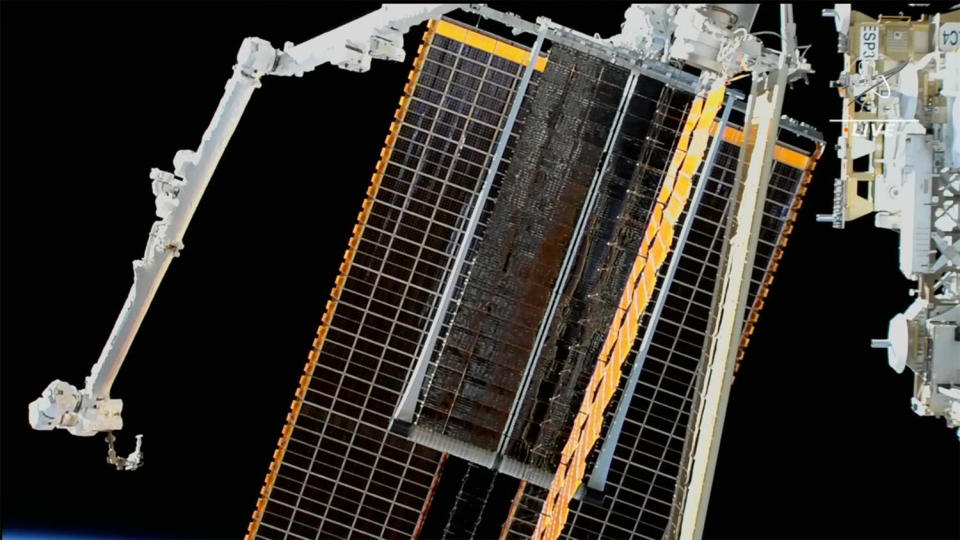Spacewalkers install major space station power system upgrade
In one of the International Space Station's most significant upgrades, two spacewalking astronauts installed a sixth roll-out solar array Thursday in an ongoing $103 million effort to augment the power generated by the lab's aging, original-equipment solar wings.
A final pair of "iROSA" blankets will be delivered to the space station in the 2025 timeframe, giving a boost to a final set of original solar wings. The upgrade is critical to offsetting age-related degradation and providing the power needed for expanded commercial operations through the remaining life of the station.

Astronauts Woody Hoburg and Stephen Bowen, who installed the fifth iROSA last week, began Thursday's spacewalk at 8:42 a.m. EDT. It was the second extravehicular activity, or EVA, for Hoburg and the 10th for Bowen, who became one of only eight people in the world — five Americans and three Russians — to venture outside a spacecraft 10 times or more.
With Thursday's five-hour 35-minute EVA, Bowen moved up to No. 3 on the list of the world's most experienced spacewalkers with a combined 65 hours and 57 minutes of EVA time, trailing only cosmonaut Anatoly Solovyev, with 78 hours, 21 minutes over 16 spacewalks, and Mike Lopez Alegria, who logged 67 hours and 40 minutes over 10.
"Woody, congratulations on your second spacewalk," radioed Canadian astronaut Jenni Sidey-Gibbons, the mission control communicator. "And Steve, congratulations on your 10th. With this spacewalk, you have tied the American spacewalking record (of 10 outings) and we are very happy to be a part of this for both of you."

The sixth iROSA, installed Thursday, was delivered to the station aboard a SpaceX Dragon cargo ship and then mounted on the right side of the lab's main power truss.
Hoburg and Bowen installed it on the far-right end of the truss, attaching it to a fixture at the base of the power channel 1B solar wing, one of eight such circuits providing electricity to the lab complex.
It was a slightly more difficult installation than usual because the station's robot arm did not have the reach to move the iROSA all the way from its pallet to the outboard 1A solar wing work site.
Instead, Hoburg, anchored to the end of the arm, manually carried the 750-pound iROSA to a point between the two starboard outboard wings and handed it off to Bowen, who was anchored to the truss itself. Hoburg then got off the arm so he and Bowen could pass it back and forth again, finally reaching the installation site.
After attaching it to its mounting fixture, the iROSA's twin blankets were wired into the 1A solar wing's circuity during orbital darkness when no power was being generated. Back in sunlight, the blankets slowly unfurled like a window shade, extending 63 feet from end to end.
"Congratulations to the entire on-orbit and ground team," Sidey-Gibbons radioed. "You performed phenomenally today."
What Miami Mayor Francis Suarez's presidential bid means for 2024 GOP field
The dads of CBS News discuss fatherhood
Denver police officer struck by fire truck along Nuggets NBA championship parade route

 money
money 